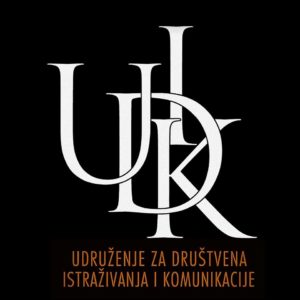 The International Day for Monuments and Sites (World Heritage Day) is held on 18 April each year around the world with different types of activities, including visits to monuments and heritage sites, conferences, round tables and newspaper articles. It was proposed by the International Council on Monuments and Sites (ICOMOS) and approved by the General Assembly of UNESCO.
The International Day for Monuments and Sites (World Heritage Day) is held on 18 April each year around the world with different types of activities, including visits to monuments and heritage sites, conferences, round tables and newspaper articles. It was proposed by the International Council on Monuments and Sites (ICOMOS) and approved by the General Assembly of UNESCO.
In 2013, the Association for Social Research and Communication (UDIK) started collecting data on monuments to victims of the past war in Bosnia and Herzegovina and region in order to create a unique database – Central Register of Monuments (orig. CES – Centralna evidencija spomenika). CES is a record of monuments in Bosnia and Herzegovina and countries of the region, which were built in the post-conflict period as a result of armed conflicts during the 1990s.
According to the CES, more than 2,100 monuments devoted to civilians and/or fighters killed during the Bosnian war (1992 – 1995) were built in Bosnia and Herzegovina. Most monuments in the Federation were built in the Tuzla Canton (288), the Sarajevo Canton (270), the Zenica – Doboj Canton (238) and the Una – Sana Canton (228). In the Republika Srpska, the higher number of mapped monuments is in the region of Bijeljina, including a subregion Zvornik (231), and in the Doboj region (198). There are also three municipalities that do not have monuments dedicated to the wartime suffering of the nineties (Istočni Drvar, Ljubinje, and Trnovo RS).
According to the CES, more than 1,200 monuments dedicated to civilians and/or fighters killed during the Homeland War (1991 – 1995) were built in Croatia. The highest number of monuments have Vukovar – Srijem County (109) and Sisak – Moslavina County (100). Regarding the cities, the highest number of monument have Zagreb (63) and Vukovar (30).
More information about the built monuments in certain cities and municipalities in Bosnia and Herzegovina and Croatia can be found on the website www.ces-cem.org.
The research and analysis carried out by the UDIK team have shown that in Bosnia and Herzegovina and Crotia were built various forms of memorials that were characterized as monuments. The most common forms of memorials are memorial plaques (both big and small-sized). Besides the plaques, there are other installations such as memorial complexes, fountains, memorial rooms, sculptures, chapels, etc. Memorial plaques are usually attached to the wall, but a large number of them are also placed on the ground. Also, the research has shown that the monuments dedicated to fallen soldiers are generally larger in size and sometimes represent the entire complex that includes a cemetery, memorial fountain, museum, etc. Also, in many cases there are no monuments dedicated to killed civilians, but during the commemorations citizens pay tribute to killed civilians laying a wreath on the monuments dedicated to fallen fighters. Also, monuments indicate pain and suffering of one people or of an individual by another nation or individual and not aimed exclusively honoring victims and peace building in the community.
In addition to these monuments, in Bosnia and Herzegovina and Croatia there are monuments that glorify the criminal war past. Thus, the Ravnogorski park in Bileća consists of several monuments: a monument dedicated to Draža Mihailović, plaques with the names of the dead Chetniks, members of the Fifth Bileća battalion, etc. In Brčko and Višegrad there are monuments dedicated to Draža Mihailović. In Slunj and Otočac (Croatia), there have been attempts on several occasions to raise the memorial to Jure Francetić. Also, in almost all major Croatian cities, the main and important street are named after him. In the cities like Osijek, Novi Zagreb, Krašić, Obrovac and Lepoglava there are monuments which remind of the character and work of Alojzije Stepinac. In Stolac, Ljubuški, and Posušje there are memorial plaques dedicated to members of the Handžar Division or the Ustashas who were muslims. These and other examples have shown that the names of those who were killed in different circumstances or on behalf of opposing ideologies can be found on the same monument. This further creates new politics of memory and very often leads to the misinterpretation of the past.
UDIK team constantly collects and updates data on memorials, and participation can be taken by every citizen in B&H or region by sending the data at e-mail: prijavispomenik@gmail.com.
PRESS SERVICE
 UDIK Udruženje za društvena istraživanja i komunikacije
UDIK Udruženje za društvena istraživanja i komunikacije

